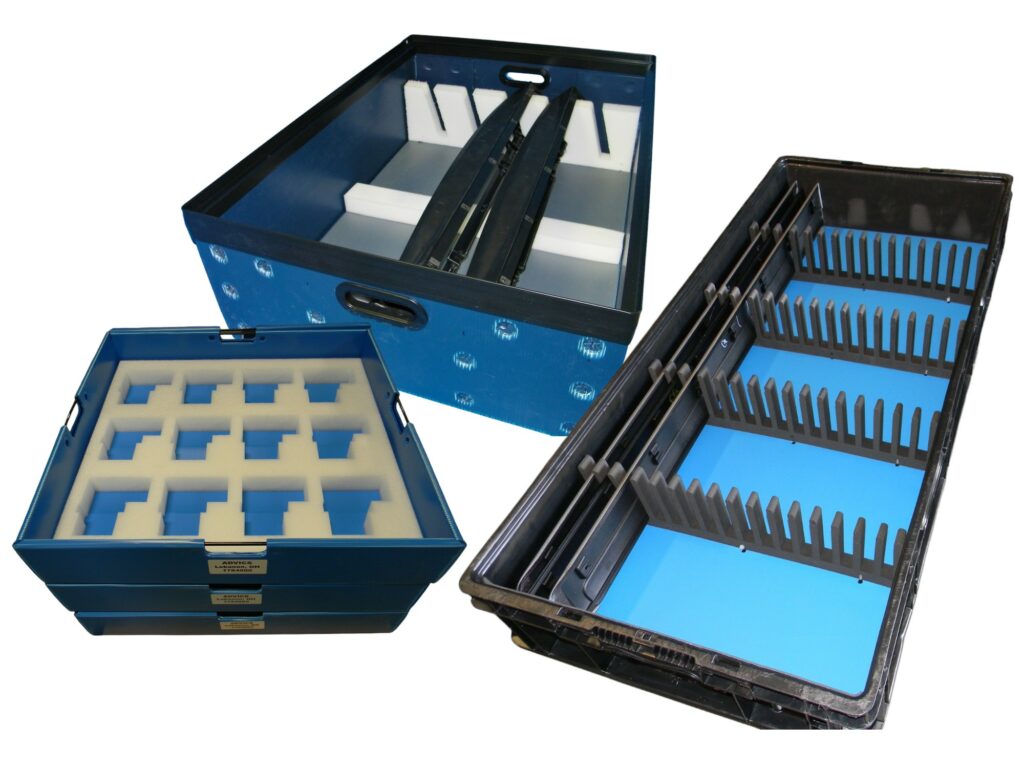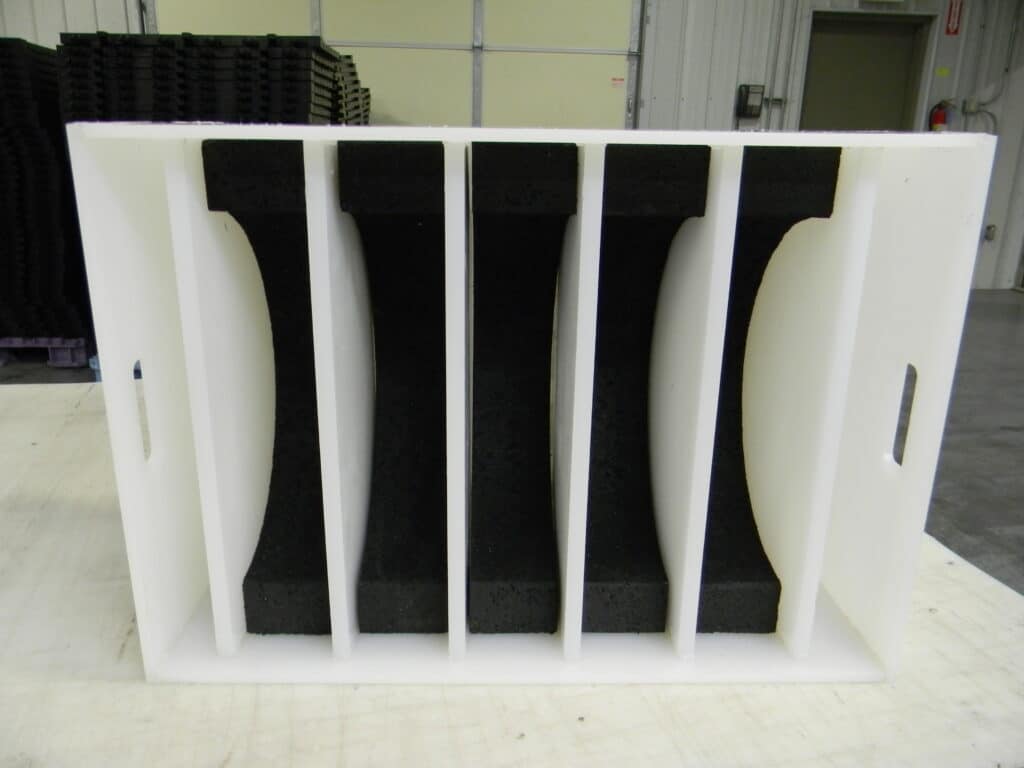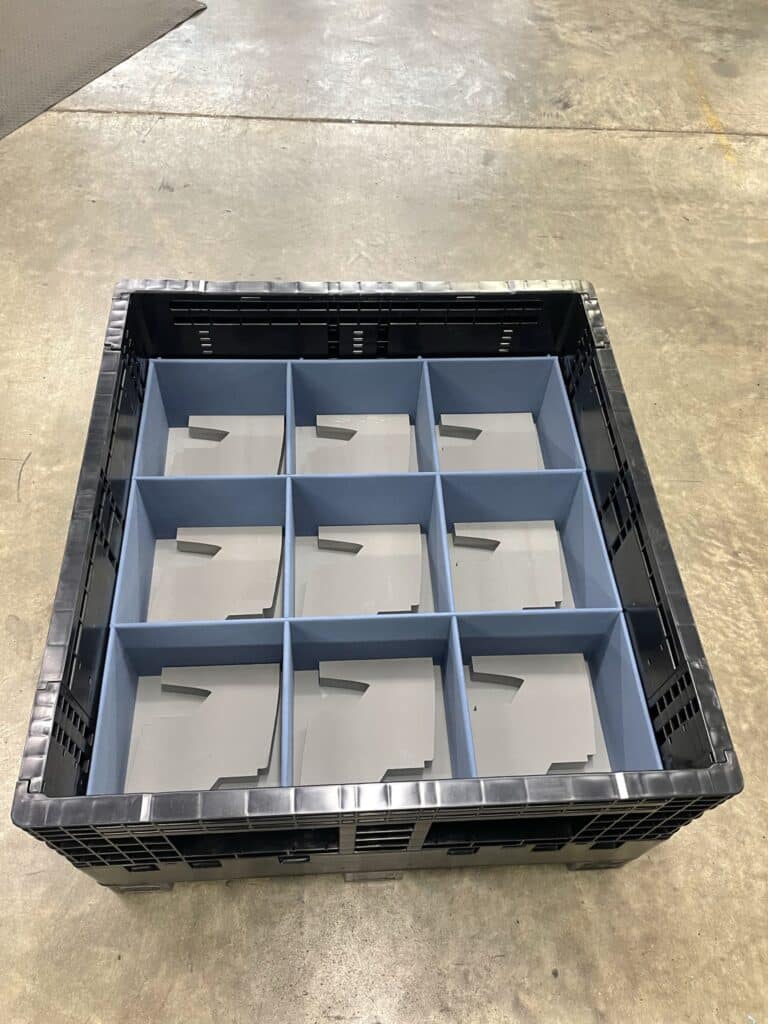Maximize Efficiency with Your Dunnage Selection Matrix
In today’s complex supply chain, choosing the right packaging is a critical decision that impacts everything from product safety to your bottom line. For industries
Universal Package’s Foam Assemblies, Trays, and Pads—commonly known as foam dunnage—deliver precision protection, secure organization, and streamlined handling for sensitive, high-value, or critical components.


Poor packaging results in expensive setbacks:
Our foam dunnage is engineered to absorb and distribute the force of impacts, acting as a cushioned barrier that minimizes the risk of damage during shipping and handling. By preventing movement, it safeguards your products from sliding, dropping, and collisions that can occur during transit. This makes it an ideal solution for fragile items, ensuring they remain secure and intact.
The inherent properties of foam allow it to absorb energy from both static and dynamic forces, protecting items from impacts, drops, and vibrations
For products with "Class A" surfaces that are susceptible to cosmetic damage, our foam packaging provides a non-abrasive cushion that prevents scratches.
We can create custom-molded foam inserts that precisely match the contours of your products for a snug and secure fit. This is especially beneficial for irregularly shaped or delicate items.
Since shipping prices are often calculated based on weight, using lightweight foam dunnage can significantly lower transportation expenses.
The adaptability of foam makes it an ideal packaging choice across various sectors, including automotive, electronics, medical, and more. Whether you need returnable or expendable packaging, our foam products can be tailored to your specific requirements.


If you’re losing revenue to part damage, inefficient packaging, or generic trays that don’t fit, it’s time to switch to foam dunnage engineered for your business. Universal Package eliminates uncertainty—ensuring your parts arrive in perfect condition, ready for assembly or retail.
The first step is all about understanding your project's unique requirements. Our team of packaging experts will work closely with you to gather all the necessary details. This initial consultation will typically cover specifications, requirements and goals.
Once we have a comprehensive understanding of your needs, our engineering team gets to work designing a custom foam solution. This stage is focused on creating an effective and efficient design for your approval.
After you have approved the final prototype, we move into the full production phase. Our state-of-the-art manufacturing facilities ensure precision, quality, and consistency for every part.

Foam dunnage is a type of protective packaging used to secure and cushion products during shipping and handling. It is custom-designed to fit the specific shape of a product, preventing movement and absorbing shock to minimize the risk of damage. It is a popular choice in industries like automotive, electronics, and medical due to its versatility and protective qualities.
Several types of foam are used, each with distinct properties to suit different applications:
Polyethylene (PE): A dense, durable, and moisture-resistant foam ideal for protecting heavier items.
Expanded Polypropylene (EPP): A lightweight, resilient, and recyclable foam that can withstand multiple impacts.
Polyurethane (PU): A softer, sponge-like foam excellent for cushioning and absorbing vibrations for delicate items.
Expanded Polystyrene (EPS): Also known as styrofoam, this is a lightweight and cost-effective option for blocking and bracing.
Cross-linked Polyethylene (XLPE): A premium, smooth foam perfect for protecting Class-A surfaces from scratches.
Anti-Static/ESD Foam: Specially formulated to protect sensitive electronic components from electrostatic discharge.
Choosing the right foam depends on several factors:
Product Fragility and Weight: Heavier or more delicate items require foams with higher density and shock absorption.
Surface Sensitivity: For products with highly polished or easily scratched surfaces (“Class A”), a smooth, non-abrasive foam like XLPE is recommended.
Shipping Conditions: Consider the potential for impact, vibration, and moisture exposure during transit.
Budget: Costs can vary, with options like EPS being more affordable upfront, while more durable, reusable foams like EPP can be more cost-effective in the long run.
Foam dunnage is highly versatile and used across numerous industries. The most common include:
Automotive: To protect painted parts, sensitive components, and heavy-duty equipment during transit.
Electronics: To provide shock absorption and anti-static protection for delicate devices and circuit boards.
Medical: To secure and protect sensitive, high-value medical equipment and devices.
Aerospace and Defense: For securing and protecting high-value components and sensitive avionics.
Absolutely. Many foam materials, such as EPP and polyethylene, are very durable and designed for multiple uses in a returnable packaging system. This reusability can lead to significant long-term cost savings and supports sustainability efforts.
Let’s eliminate damage, excess cost, and complexity from your packaging process.
Contact us today to discuss how foam dunnage such as foam aseemblies, foam tray and foam pads can fit your workflow—and improve your bottom line.
In today’s complex supply chain, choosing the right packaging is a critical decision that impacts everything from product safety to your bottom line. For industries
You’ve spent time, resources, and expertise creating high-quality industrial parts and components. But what happens between the production line and the final destination, or even
When it comes to protecting your products during transport or storage, choosing the right packaging material is crucial. Foam packaging offers a versatile and effective